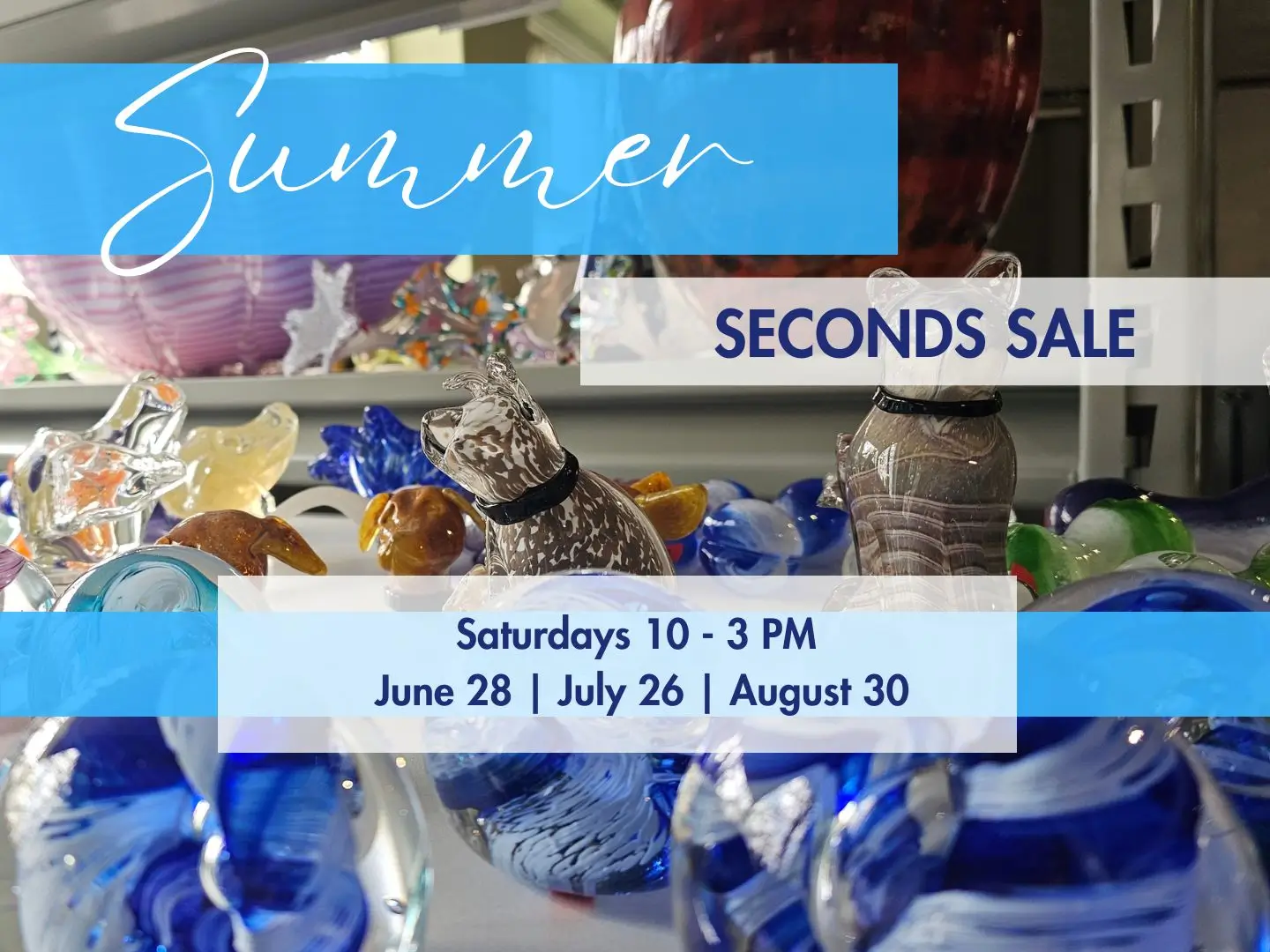
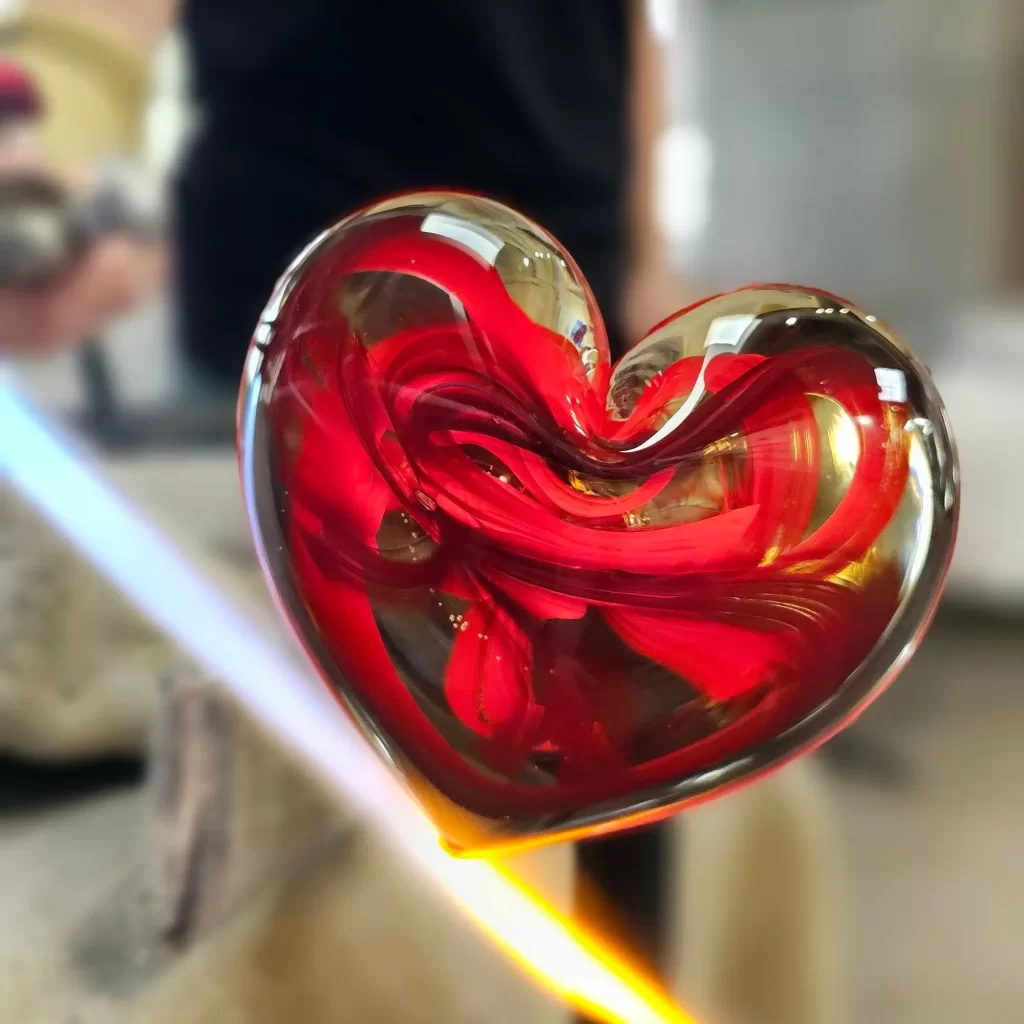
We get asked this question often – Why is glass so expensive? When we post images of artwork for sale online some people experience sticker shock. Today we’re going to deep dive in what goes into making glass and how we price our art.
Glassblowing is HARD! People frequently comment on our videos to say that we make glassblowing look so easy. Olympic athletes make it look easy too thanks to years of practice and dedication. We are talking 100’s of thousands of hours of doing the same thing over and over until it becomes muscle memory.
You really only understand all the complexities that go into glassblowing once you’ve tried it. Even the most foundational skills take a lot of practice. Watch this video from Corning Museum of Glass to get a better idea of what it’s like to take a gather of glass from the furnace – one of the first skills you have to perfect and one of the hardest to master.
Taking classes or going to art school to learn how to blow glass costs a lot of money. We won’t go too much into that here, but you can read one of our older blog posts, Art School: Is it worth it… or is there another way?, which takes a look at the pros and cons of art school.
If you’re lucky enough to find someone to train you, you get a scholarship to an art school or if you decide to forego art school altogether, you’ll still likely take extra classes, which are costly. Click here to see pricing for some of Corning’s classes.
If you’re not local to an institution that offers classes, then you need to account for taking time off work, traveling, finding a place to stay, etc. These costs add up quickly. But if glassblowing is what you want to do, you’ll find a way to make it work.
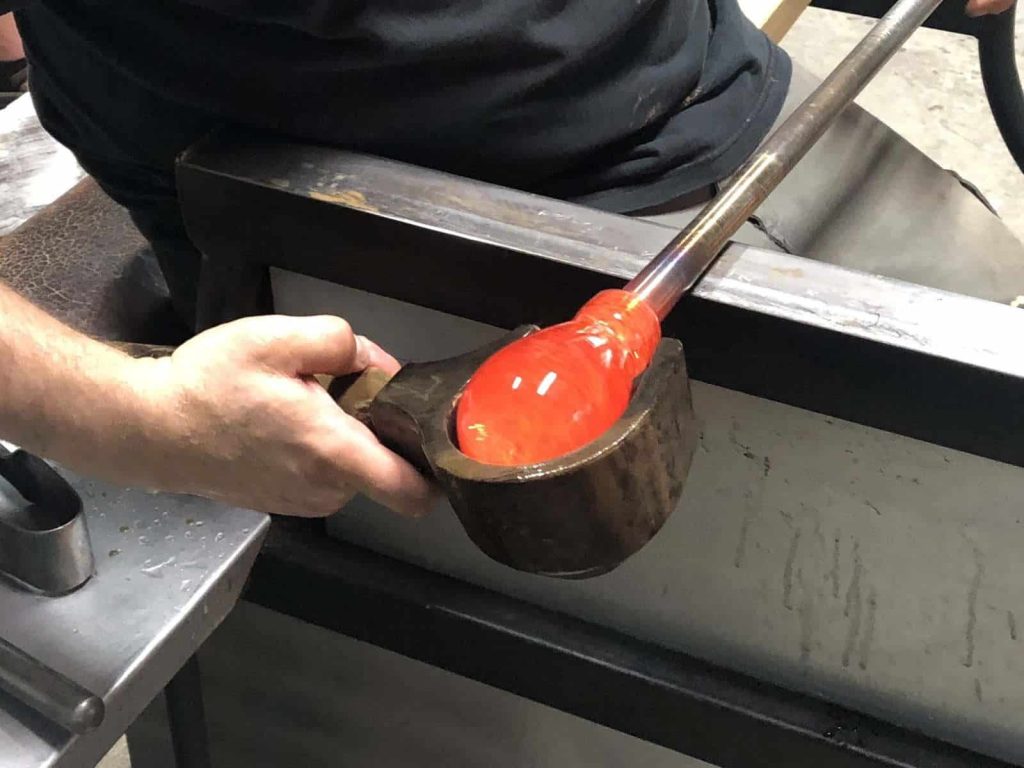
What’s the difference between a professional and an amature? Commitment. Time. Persistence. Habit and routine. We are professionals. We are committed to this work. We do it consistently with a committed attitude on a regular schedule whether we feel like it or not. We have made this our lives work.
Glass is a very difficult medium continually challenging and engaging us with new opportunities to understand how it works.
The nuanced differences in temperature is a good example. How many shades of orange are there between 2400 degrees and 900? We don’t know for sure but we know there aren’t enough words to describe all the color changes we see as the glass cools. You have to see it, over many years again and again before you start to understand it.
It’s a constant practice if you want to take it seriously and progress. Glass is life and if you’re not in it for the long haul, you can still do it, but you have to manage your expectations.
Glass artists are obsessed with glass otherwise they wouldn’t stick with it. Working in the studio is hot and uncomfortable, it’s expensive and potentially dangerous. If you don’t love it, you’ll give up quickly!
April has been working with glass for over 25 years to get to the level she is at now. Aside from her near fatal car accidents, she has consistently been creating.
Most of the glass artists working in the studio have less than ten years under their belt. They assist in the studio and practice perfecting various techniques. They also continue learning by taking classes and institutions like Corning like mentioned above. Even with all of her years of experience, April took part in a glassblowing workshop earlier this year. It’s a lifelong commitment to learning and improving.
Once you’re out of school, you’ll have to consider opening up your own studio or find places to rent studio time.
Opening up a studio costs thousands of dollars. Finding a place to set up a studio, permits, construction, equipment – it’s a lot to consider and invest in. Once you open there are monthly costs. We spend at least $1200/month on gas and electric to run the furnace and reheating chamber. We spend even more if we use the large reheating chamber. We’re a business so we also have overhead costs, employees to pay, marketing, maintenance, etc, etc.
Alternatively, there are places around the country and world that allow you to rent time. The costs that come with this are accessibility and rental fees. If you’re lucky, you’ll live close to a studio or museum that allows the public to rent time. If not, you’ll have to travel to place that allows for renting. There is typically an hourly rate. Corning Museum of Art allows for studio rental at a rate of $38/hour (see here) and Toledo Museum of Art rents at a rate of $95/3 hours (here). On top of rental feels, you’ll need to consider tools and materials, which we’ll go over next.
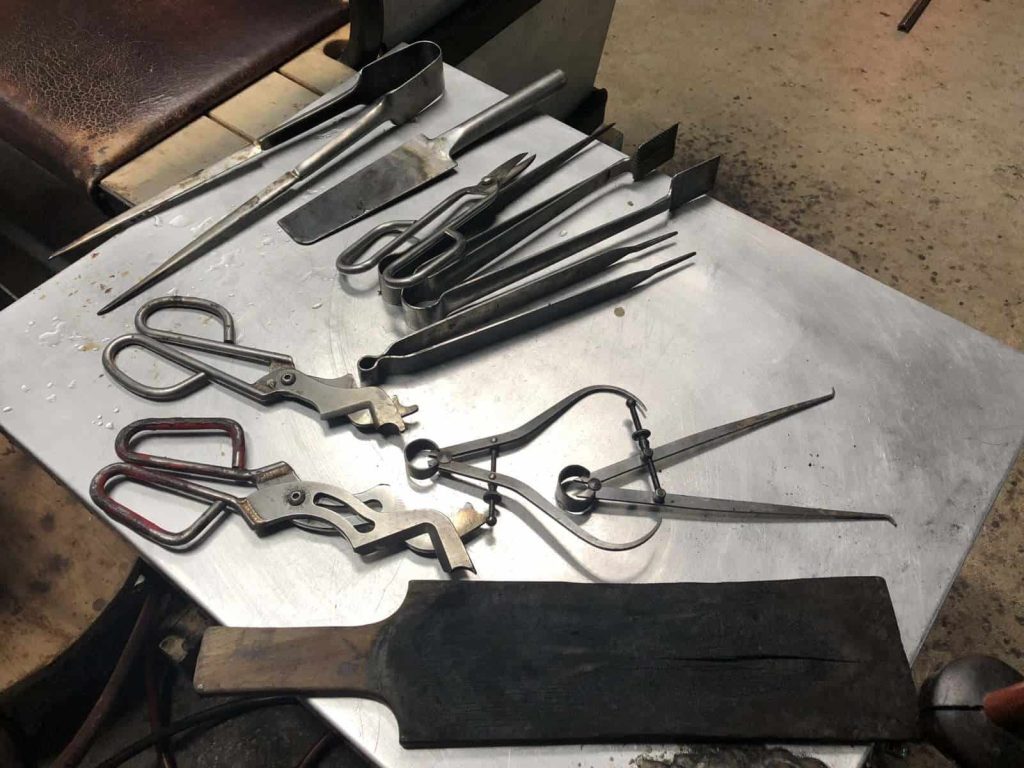
So what kind of costs can you expect for materials and tools? We use a variety of different tools (which you can learn about here). And we have multiples of most tools in different sizes. Most of them start at about $100 USD – quite an investment! Blow pipes and punties start at about $120 USD and we have several of each. Check out this price list from Jim Moore for an idea of what glassblowing tools cost.
So tools are pricey, but they’re a longterm up-front investment that will (hopefully) last years and years with proper use and care. What about something that needs to be constantly replenished, like glass? Depending on how much glass we go through, we usually order about 7,000 lbs of batch around every 6 months. This raw material costs about $1/lb, not including freight.
Colored glass like this costs about $35 – 106 per kilo of color. The price is based on materials, the rarity of the minerals it’s made of and how difficult it is to make.
Finally, let’s look at dichroic glass, like we use in our beautiful sparkly Vedic paperweights. April recently purchased 6 sheets for $1,2000 USD! The price of materials absolutely has to be considered when pricing artwork, otherwise we’ll be taking a loss to create it.
Aside from the time it takes to learn, each piece requires time. Not every attempted piece of artwork will come out perfectly. Some will be sold as seconds at a discounted price. Some pieces use more materials, are more difficult to make or take more time. These are all factors that also must be considered when pricing artwork. For example, we can make many successful heart paperweights at a faster rate in one day than we can make Splash Bowls. This is because the process has less complex steps.
The experience level mentioned above also comes into play. Our glass artists make most of the production pieces, which allows them to sell at a lower price point. April’s sculptures will account for her many years of experience and sell for a higher price.
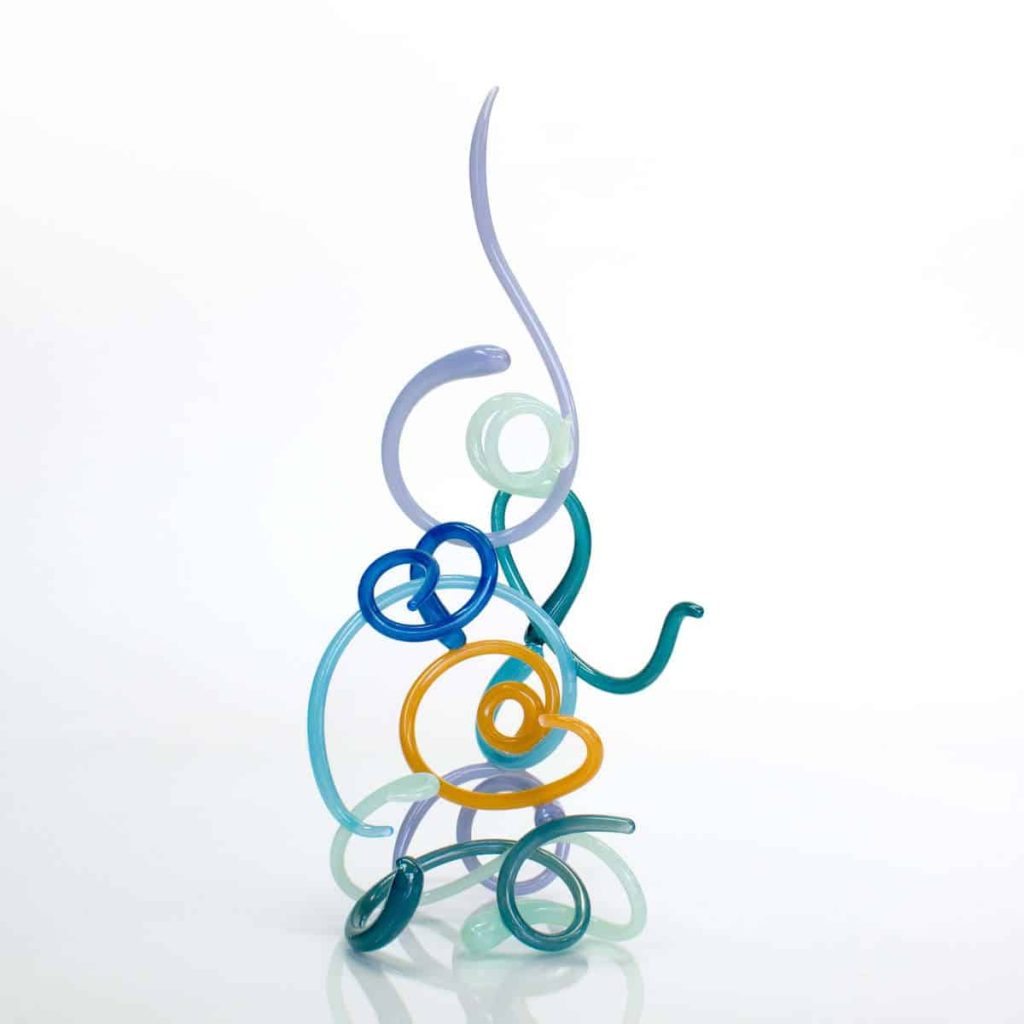

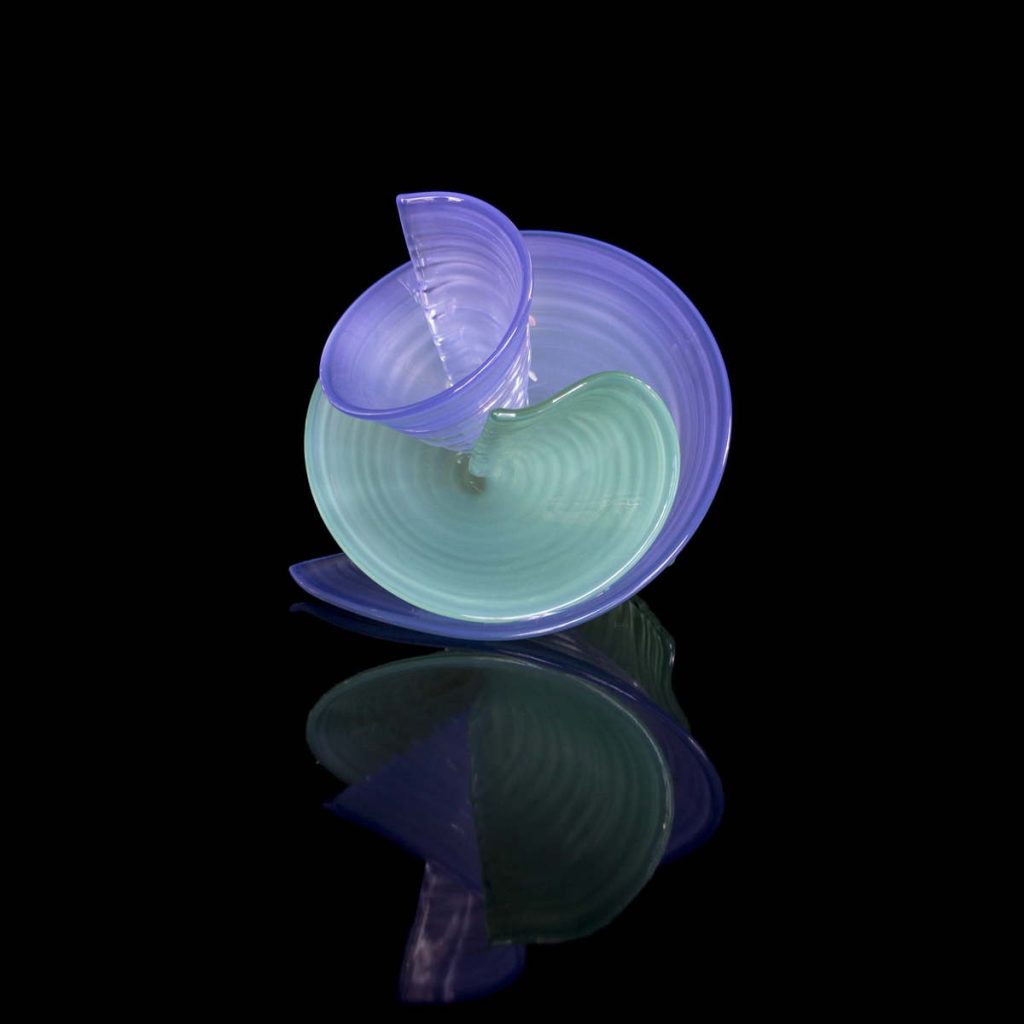
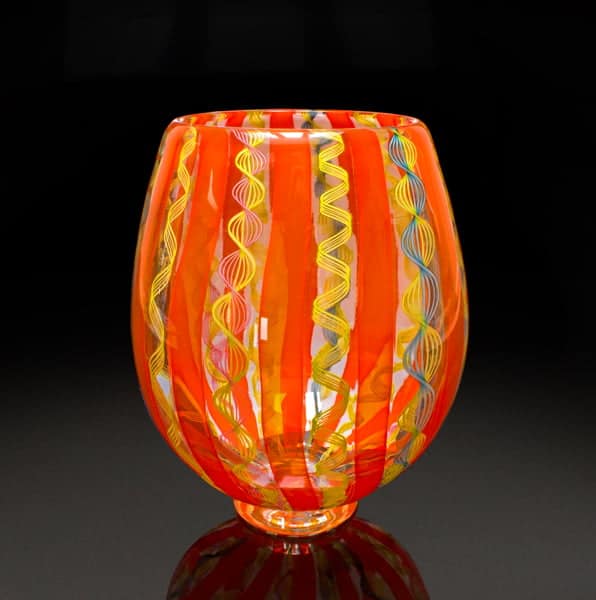
In general, art and artists are unfortunately, undervalued in our society. Artists are frequently told they won’t make it, they’re wasting their time, what they’re doing is a hobby and they should get a real job. They’re expected to do work for low rates or even for free or in exchange for exposure. Art isn’t included in budgets and funding for the arts is usually the first to be cut. In reality, artists bring immense value to our communities and it’s important for them to recognize their own value and not be undercut.
If you buy artwork from an artist, you’ll likely be paying more than something you’d purchase from Amazon or Target. There’s added value in that it’s handmade, unique and one-of-a-kind. These pieces aren’t being mass manufactured in a factory somewhere. Plus you know you’re supporting an artist and their (likely) small business!
If you’re careful with glass, it will last your lifetime and can be passed down through generations. It’s a worthwhile investment that increases as the years pass. Lower priced items like our heart paperweights or sleeping kitties have value in their craftsmanship. You can know that hard work and dedication was put into making them and that they are high quality pieces.
We hope this gave you a new appreciation for all that goes into creating glass art and gives you a new perspcetive on why it’s priced the way it is. It’s so important to support local artists, especially during these uncertain times. We all need to help each other to keep afloat.
We’re still offering free shipping on all US orders in our webstore. If you didn’t already know, we also have PayPal Credit available at checkout so you can pay off artwork in installments. You can also help us by following us on Facebook & Instagram, sharing our content and signing up for our newsletter. We appreciate your ongoing support!

Open Shopping: Thursday & Saturday 10 am to 3 pm | Curbside: Tuesday to Saturday: 10 am to 3 pm | Other times: By appointment.